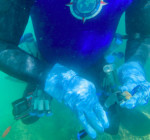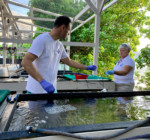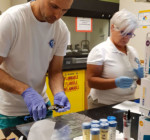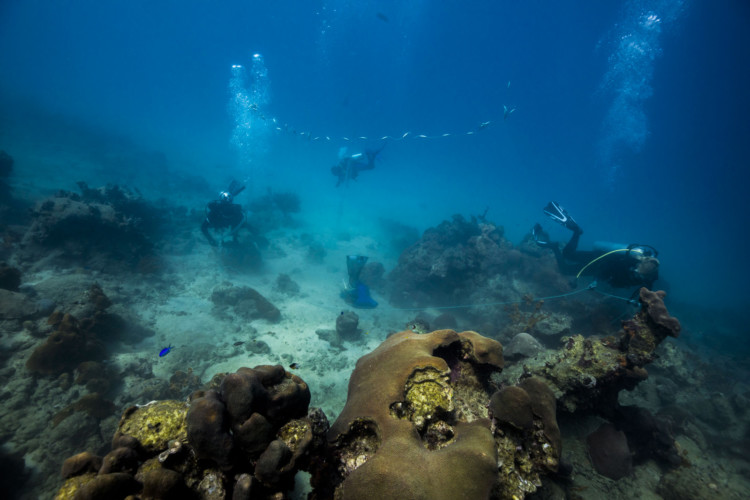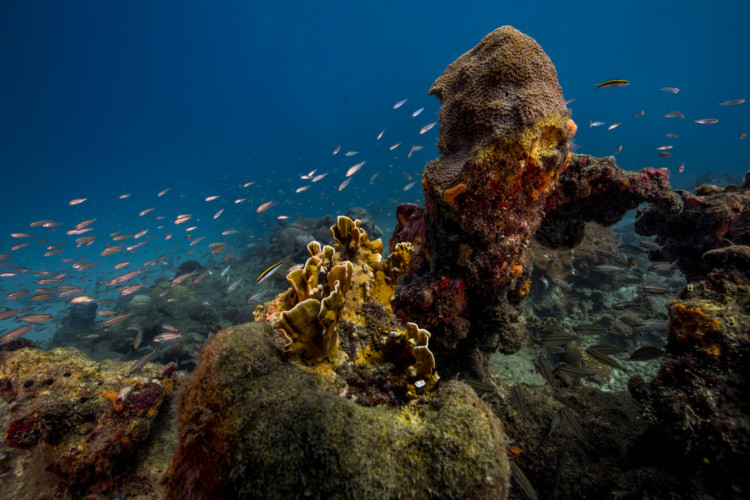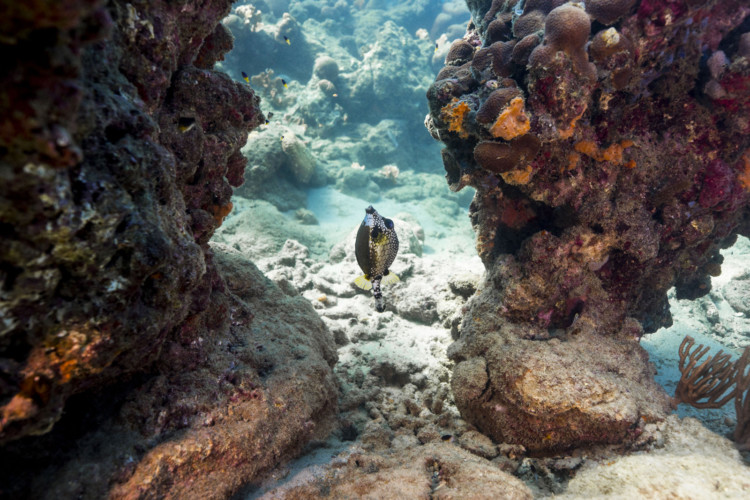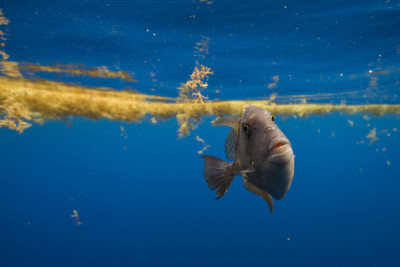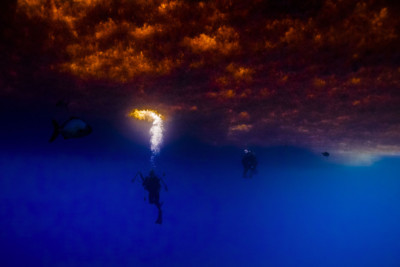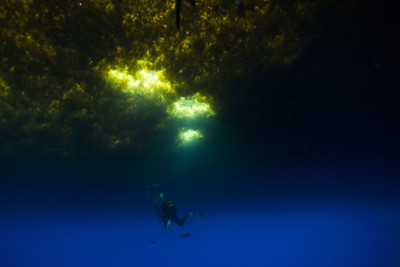[vc_row][vc_column][gem_button position=”center” corner=”3″ icon_pack=”elegant” text=”Read on Big Island Now website” link=”url:http%3A%2F%2Fbigislandnow.com%2F2018%2F12%2F02%2Fscientists-study-links-between-human-and-coral-health%2F||target:%20_blank|”][vc_column_text] [/vc_column_text][/vc_column][/vc_row][vc_row][vc_column][/vc_column][/vc_row]
[/vc_column_text][/vc_column][/vc_row][vc_row][vc_column][/vc_column][/vc_row]
Today, the Monaco Explorations team spent more than two hours in the waters of Kāneʻohe Bay off the shores of Moku O Loʻe Island, Hawaii to collect samples from corals showing abnormal growths. The team then brought the samples to the laboratory on-island to preserve them for their return to Centre Scientifique de Monaco. The goal is to understand if these abnormal growths are malignant and which mechanisms are activated to fight the growths.
Photos © Monaco Explorations.
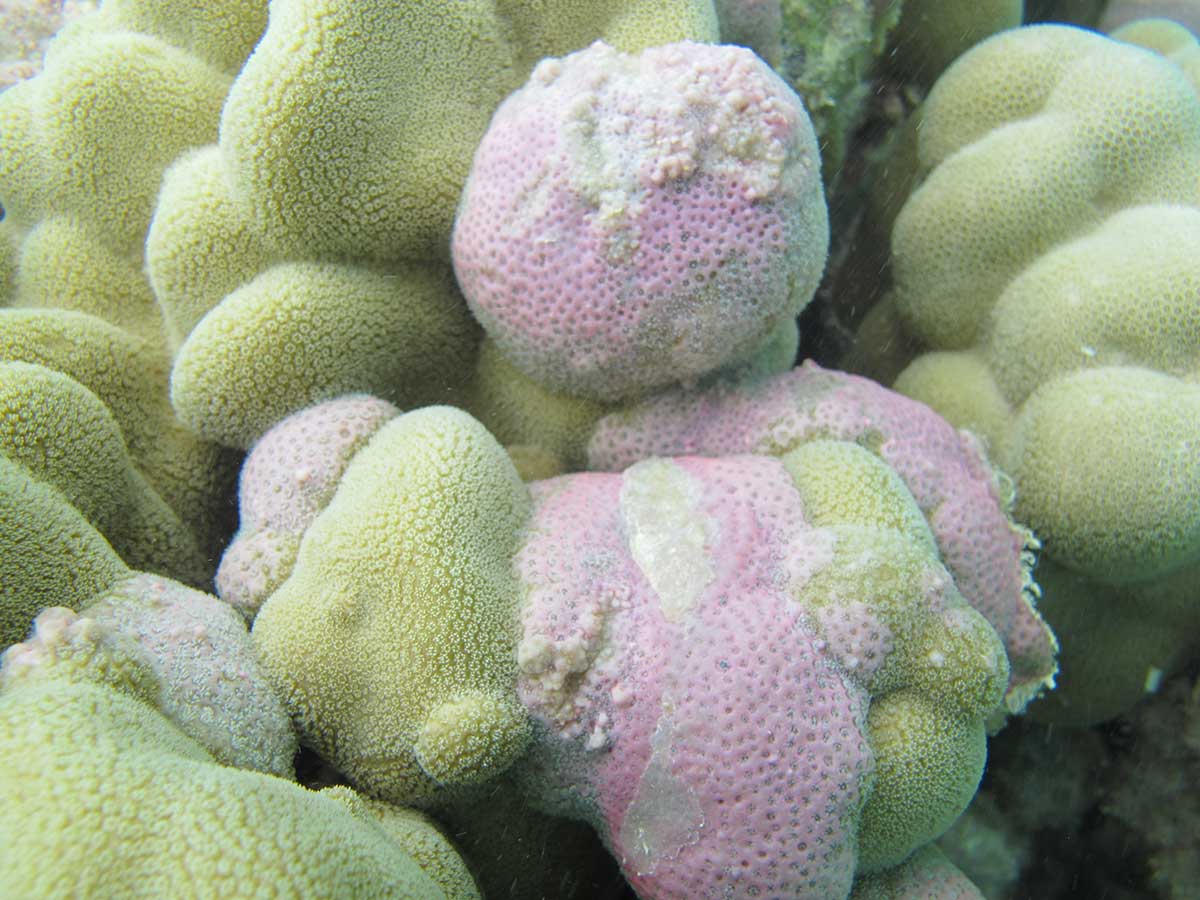
Researchers from Centre Scientifique de Monaco (CSM) will collect samples from two species of corals showing abnormal growths in Hawaiʻi’s Kāneʻohe Bay from November 30th until December 9th, 2018. The mission takes place as part of the Monaco Explorations campaign and will be hosted by the Hawaiʻi Institute of Marine Biology on Moku O Loʻe Island.
To read more, view the press release.
We are in Colombia on the Caribbean coast as a continuation of the work done in Malpelo in March 2018. This work is in support of the Megafauna Consortium and Invemar. This is the team’s first time collecting eDNA samples in this area, and they hope to work toward classifying this region as a marine protected area.
Photo © O. Borde / Monaco Explorations
As the Yersin travels from Cabo Verde to Martinique, a team of researchers led by Thomas Changeux from Aix-Marseille University will be on board to collect samples and observe the occurrences in the deep sea.
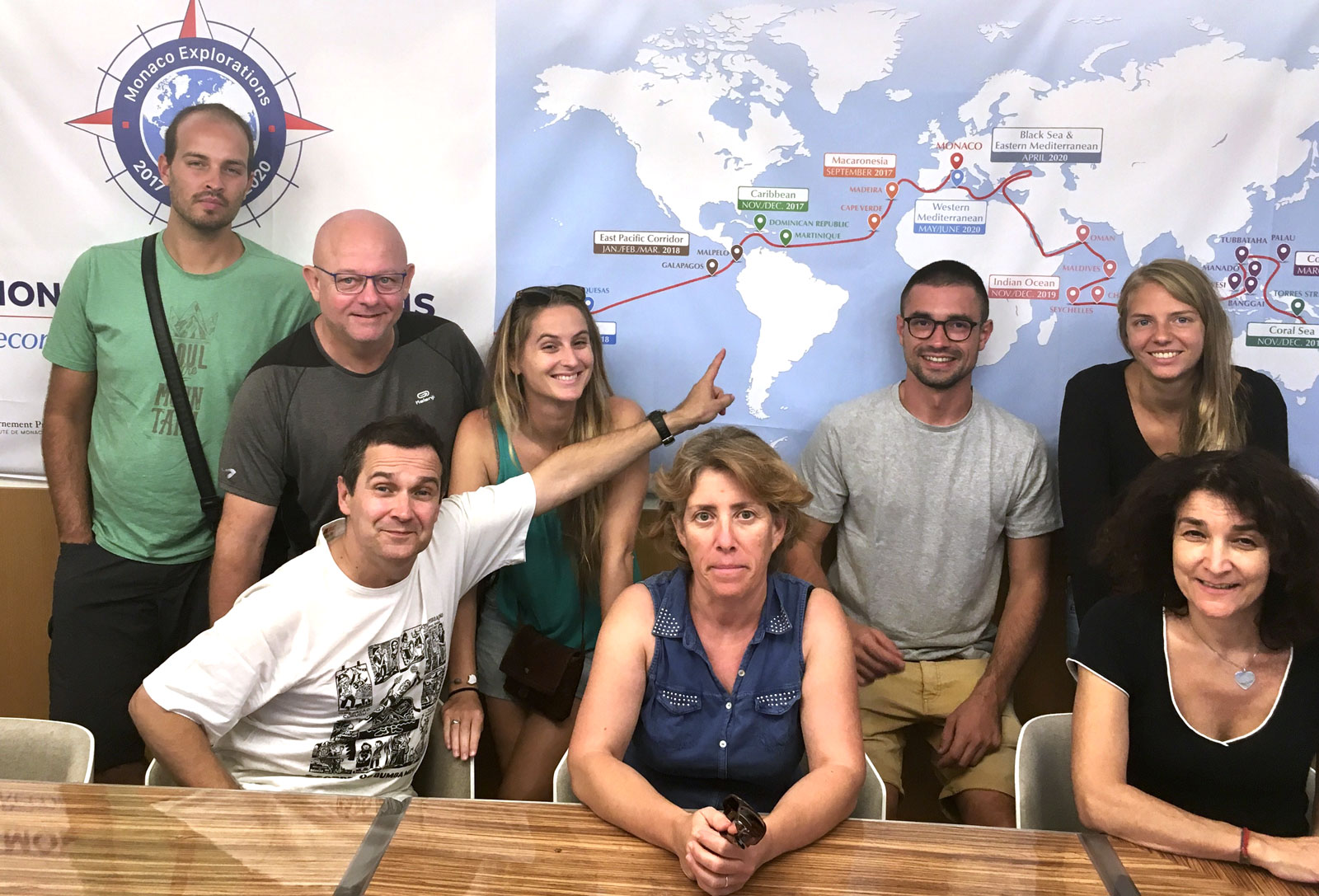 What is Sargassum?
What is Sargassum?
Sargassum are brown marine seaweed from the genus Sargassum. Only two species (Sargassum natans and Sargassum fluitans) are known to live in the open ocean, having a strictly pelagic cycle. But there are about 350 other species of Sargassum attached to the bottom of the sea in the coastal zone, part of the benthic habitat.
What is your goal in studying Sargassum?
Everybody knows the Sargasso Sea described by Christopher Columbus during his trip to the New World, close to Bermuda archipelago. Since 2011, unprecedented and repetitive large mass strandings of the pelagic species of Sargassum have been reported in the North Atlantic along the coasts of West Africa, Caribbean, West Indies and the Brazilian coasts. Simultaneously, satellite imagery has revealed new Sargassum blooms further south in the north equatorial current forming what we can call a “new Sargasso sea”. What are the causes of this phenomenon? And what are the consequences for pelagic life of the ocean? These are the two main questions we want to answer.
Why are Sargassum an threat in the Caribbean?
The large mass strandings of Sargassum are deleterious, depriving coastal life of light and creating large amounts of organic matter in putrefaction at shore. These “brown tides” have dramatic consequences on water and air quality, on the health of the population and on the economic life in the Caribbean. Hydrogen sulfide concentration in the air may be so high that it can corrodes metals in the vicinities of the shores, especially electronic circuits.
